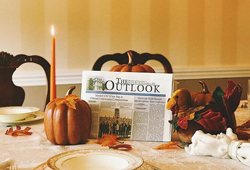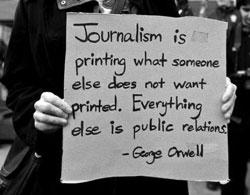We read the recent article regarding sustainability and wanted to share with you some of the University’s efforts to be green.
Monmouth University was the first private institution of higher education in New Jersey to enter into a voluntary Memorandum of Understanding (MOU) with the US Environmental Protection Agency (EPA), documenting our commitment as an environmental steward and pledging to reduce our carbon footprint. In addition, the University was the only institution of higher education east of the Mississippi to install a solar system in 2006. We have been included in the Princeton Review’s Guide to Green Colleges several times. We are also members of Association for the Advancement of Sustainability in Higher Education (AASHE) and APPA: Leadership in Educational Facilities.
Our sustainability efforts are accomplished through the cooperation of multiple divisions and departments within the University. For example, Facilities Management organizes trash/recycling practices on-campus and coordinates our outside waste removal company. One of Gourmet Dining’s top priorities includes sustainable development, including purchasing food from sustainable sources whenever possible and by vowing to increase the amount of plastic recycled by at least 10% every year while sourcing alternative materials to replace the plastics used in their operations. Residential Life provides trash/recycling information included in their Residential Life Guidebook and hosts “floor meetings” during the first week of the Fall semester each year, and information is also included on bulletin boards and in hallways in residence halls. The Office of Off-Campus and Commuter Services also provides information regarding trash/recycling in their Guide to Living Off-Campus. Information Management handles recycling computer equipment.
The University’s waste diversion rate for 2016 (including Single-stream recycling, yardwaste/compost, metal, construction/demo, electronics, and lightbulbs, etc.) was approximately 80%. We utilize Single-stream Recycling, with containers adjacent to all of our campus trash receptacles. Landscaping waste is re-used or recycled, including use in the Community Garden. We also recycle metal, car batteries, tires, used oil, used antifreeze, used light bulbs, and printer/photocopier ink/toner cartridges. In 2016, we recycled approximately 1.5 tons of light bulbs and 43 tons of metal. We partner with Computers for Kids of America to repurpose electronic waste, approximately 7.58 tons in 2016. During residence hall move-outs, we partner with Big Brothers/Big Sisters of Monmouth County to collect clothing and books for reuse or recycling. We also regularly participate in Recyclemania.
Since 2014 when the University began installing Hydration Stations (to fill reusable containers with filtered water), your collective effort has helped to avoid the inclusion of more than 507,000 disposable plastic bottles (or approximately 136,000 bottles during 2016).
We continue to increase our purchases of Green Seal and EcoLogo certified cleaning products used for housekeeping. All restroom paper products are 100% recycled. All trash can liners are made from 70% post-consumer recycled content.
We continue to improve the efficiency of our current building operations. We have completed LED lighting retro-fits in the OceanFirst Bank Center, Bey Hall, Plangere Center, and Anacon Hall in the Student Center, resulting in an annual reduction of approximately 594,524 kWh of electricity. We are scheduled to complete an LED lighting retro-fit in all parking lots. The University’s NOx emissions for 2015 were 4.07 tons as compared to 2014’s emission of 6.08 tons. The reduction is a direct result of the updated and efficient choices made when replacing mechanical equipment. In addition, the University always looks to ASHRAE green building guidelines to help us create buildings that are healthier, more environmentally responsible, and resource efficient.
We guarantee annually to purchase at least 15% of our utility-supplied electricity from certified green sources. Further, we have been generating electricity with our University-owned 454 kWp solar photovoltaic system, installed since 2006. We generated 495 SRECs in 2016. The University also installed an additional 568.36 kWp solar photovoltaic system on the rooftops of seven additional campus buildings through a private partnership with an outside company at no cost to our students. We accomplished this by entering into a Power Purchase Agreement where at the end of the term we will own the system. Combined, these University systems have the capacity to generate over 1.02 MW of electricity annually from renewable sources. A solar performance-monitoring kiosk is located on the first floor of the Student Center so students can see the results in real-time.
The University’s fleet of vehicles includes 3 electric hybrid vehicles and 30 electric golf carts used to transport people and goods around campus. We have an electric vehicle charging station located adjacent to Boylan Gymnasium. Bicycle racks are installed near all major campus buildings and residence halls. We partner with Long Branch EZ Ride community shuttle service and Zipcar. Our Zipcar program provides a choice between two vehicles for University members, one being a hybrid. Zipcar estimates that each Zipcar will take at least 15 privately owned vehicles off the road. During 2016, the Zipcar program at the University recorded over 23,268 miles driven and 459 member reservations. The University also complies with EPA regulations which prohibit the idling of any vehicle on campus for more than three minutes.
Thank you for helping us go green! The University continually looks for ways to improve our sustainability efforts.
If you have any questions, or would like to present an idea, please contact Patricia Swannack, at pswannac@monmouth.edu.



